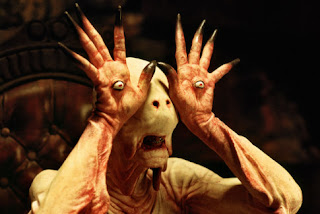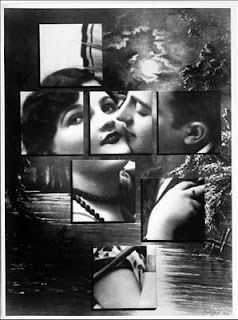Herbert Bayer - Lonely Metropolitan

Herbert Bayer - Lonely Metropolitan
(Modernism in Central Europe - Exhibition at the Washington National Gallery)
(Modernism in Central Europe - Exhibition at the Washington National Gallery)
Trying to understand the senses in Lonely Metropolitan I was searching on the web for information about Herbert Bayer, and I came upon an American artist, Jim McNitt, passionated by the alternative universe of puzzling, dreamlike imagery in the paintings of Max Ernst and Rene Magritte and the photographs of Man Ray and Herbert Bayer (Jim McNitt: The Accidental Surrealist).
 Jim McNitt came to Paris in the winter of 1969, and realized there the affinity between the generation of Surrealists and his own generation. Surrealists grew out of WWI, the generation of '69 grew out from the Vietnam War, both felt the same revolt against old values.
Jim McNitt came to Paris in the winter of 1969, and realized there the affinity between the generation of Surrealists and his own generation. Surrealists grew out of WWI, the generation of '69 grew out from the Vietnam War, both felt the same revolt against old values.This work of Jim McNitt, Falling, was made in 2004, and is his replica to the Lonely Metropolitan of Herbert Bayer, 72 years later.

For me, the Lonely Metropolitan brought into my mind another image, from Pan's Labyrint, the movie of Guillermo del Toro. It is a movie that I consider on my top-ten list ever. And it is the same alternative universe of puzzling, dreamlike imagery, parallel with our own universe, up to a point where one can ask which is the real one?
Paul Tillich would have said that both universes coexist, and that they are embedded, each one into the other, only our universe is not aware of that. Well, Tillich was a theologian, but let me ask you something: is it not the 21 Grams of Iñárritu (friend with del Toro) a movie about The Courage to Be?
It was another work of Herbert Bayer that gave me much more the sense I was looking for in the Lonely Metropolitan: his Selbstportrait, from the same year, 1932: the viewer looks over Bayer's shoulder as he stands bare-chested before a mirror, gazing with horror at his raised left arm, from which a slice has mysteriously and bloodlessly vanished. (He seems to be unaware that he is grasping the missing slice in his right hand (NY Times). And a strange phrase from Caragiale, gave me the key: vad enorm si simt monstruos (my seeing is enormous and my feeling is monstrous): we become suddenly aware of the other universe, that invaded ours, we are surrounded by it, we don't know any more which universe is the real one, and we are horrified.

Both the Lonely Metropolitan and the Selbstportrait are masterpieces. The rest of his work is derivative: as a Surrealist he followed Tanguy, and also Magritte; as an Abstractionist he was following Kandinsky; as a Constructivist he was following the Russians (either Suprematists or Constructivists).
Bayer was a Bauhaus guy, in search for the integration of art and design, preoccupied to create new typesets (like so many other Bauhaus guys - only the dreamlike typesets are to be find in the Abeceda of Karel Teige). During his life he worked as an architect, as a teacher at Bauhaus (for advertising, layout and typography), as a commercial photographer, as an artist in his own right.
Herbert Bayer remains in the history of art by his two masterpieces: he does not follow in them anybody else, he is there himself, truly unique - one can make associations of ideas between the Lonely Metropolitan and the Selbstportrait and other masterpieces from various periods, from various domains of art, only they are associations of pairs. The two works put Bayer in dialog with Caragiale, with Tillich, with del Toro.








(Modernism in Central Europe)

0 Comments:
Post a Comment
<< Home